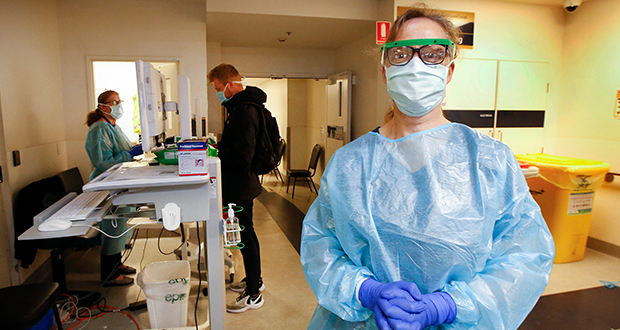“There is no patient emergency more important than the safety of our healthcare workforce.”
This is the first principle of a new, 88-page set of guidelines for emergency clinicians on the COVID-19 pandemic frontlines, released by the Australasian College for Emergency Medicine (ACEM), a peak body in Australia and New Zealand.
The second principle aligns with the first: personal protective equipment (PPE) for emergency workers is paramount.
Australia is facing a dire shortage of PPE for its healthcare workforce. As the ABC reports, there is just one medical mask manufacturing company in Australia, which is frantically ramping up production to meet growing demand – going from 2 million to a new projection of 50 million units a year.
The situation is similar in other regions worst hit by the pandemic. In New York this week, a hospital nurse forced to wear garbage bags in place of medical scrubs died. The country’s Centre for Disease Control (CDC) has even updated its messaging, recommending that healthcare workers fashion home-made masks out of scarves or bandanas as a last resort. In Toronto and elsewhere, hospitals have put out a call to the community to donate unused masks from their stockpiles.
Such stop-gap measures have been slammed as insufficient, endangering and the result of a healthcare system grossly underprepared to confront an outbreak of this scale.
Other areas covered by the ACEM guidelines include planning, staffing, patient transport, triage, department design layout, and ethical decision-making.
The preservation of staff wellbeing – in the short and long-term – is also given space. For instance, ACEM recommends that emergency clinicians are rotated through areas of high stress to areas of low stress, with breaks every four hours and debriefings following every shift.
Even before the crisis, burnout and the psychosocial impact of healthcare work has merited extensive discussion and research. The virus has exacerbated this vulnerability.
Though large swathes of the public are valorising healthcare workers for their sacrifice – through upswelling cheers in the London night, in Betoota articles balancing pride with cheek, and in tweets like this one – there is a counteracting wave of hostility. Nurses have been the targets of physical and verbal abuse by citizens, stigmatised as “disease spreaders”.
In a statement on their website, the New South Wales Nurses & Midwives' Association issued a plea to the community.
"Please do not treat nurses, midwives and other health workers like they are infectious," the union’s statement reads. "These trained professionals should be respected and must not be abused, spat on or assaulted as they move through our communities, to and from their workplaces."
While extensive, the authors of the ACEM guidelines emphasise that it be read in conjunction with state-specific documents. They also identify the document as a “living” one – capable of evolving to take in changes as circumstances change. Recommendations to update the guidelines can be emailed to [email protected].
Email [email protected]
 Aged Care Insite Australia's number one aged care news source
Aged Care Insite Australia's number one aged care news source

